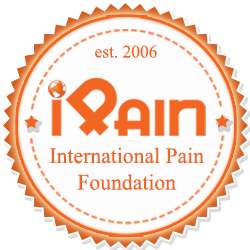It’s Chronic Pain Awareness Month 2023, and we are exploring Creating Inclusive Workspaces For People Living With Chronic Pain.
Chronic pain is a health condition that plagues millions of employees today, as about 1 in 6 working Americans are in pain every day. Not only does chronic pain hurt a worker’s quality of life, but it can also affect a person’s performance and attitude toward work. According to a recent poll, people with chronic pain were 64% less likely to view their jobs as rewarding, and 47% were more likely to experience abuse in the workplace. Moreover, people with constant pain missed about nine more days of work per year than employees without pain.
Since chronic pain in employees results in loss of productivity and morale, organizations should make it a point to create a work environment that would support their needs. Also, they should create a safe space so people in pain can manage their health without feeling guilty about it. Here’s how companies can create inclusive workspaces for people living with chronic pain.
Create Green and Accessible Outdoor Workspaces
Some forms of chronic pain can be debilitating, and people must use mobility aids, like wheelchairs, to get around. If you have employees who use wheelchairs, consider landscaping to improve wheelchair access. This involves creating ramps, widening pathways, and having extra wide accessible parking spaces, among others, to help employees easily get in and out of the workplace.
Apart from having better wheelchair access, think about creating green spaces where employees can spend their breaks. These areas should have natural and lush greenery, places to sit, and ample space to maneuver a wheelchair or walk around. Studies show that being in nature can decrease pain perception in those experiencing chronic pain, so add trees, flowering shrubs, and fragrant herbs to your workplace’s outdoor area to make the most of nature’s healing effect.
Provide Ergonomic Furniture in your Workspaces
If your employees are in front of their workstations for hours, they’re likely experiencing body aches brought about by prolonged hours of sitting. Those with chronic pain may have it even worse, so consider providing ergonomic furniture for everyone. Using an ergonomic chair can reduce discomfort associated with chronic back pain. Moreover, it keeps the user from slouching or having bad posture, which can exacerbate pain. Also, see if your company can provide standing or adjustable desks. This type of ergonomic furniture can relieve pain caused by too much sitting, and according to Dr. Robert H. Schmerling of Harvard Health Publishing, it may help to reduce shoulder and back pain.
Create Stress Relief Programs
There is a connection between chronic pain and stress since living with pain day after day can be stressful. Add pain-induced stress to work stress, creating the risk of mental health problems. According to studies, about one-third of adults with pain have anxiety or depression. To improve your employees’ overall well-being, creating stress relief programs for them is essential.
These programs can be as simple as carving out some time during the day to do group stretching exercises or chair yoga poses to relieve pain. Also, since evidence suggests that any form of physical activity can reduce pain, your company may consider partnering with gyms or dance studios so that your employees can get memberships or take classes at discounted rates. Creating a break room wherein people can relax and have a few quiet moments during the day can also be helpful for employees who have chronic pain. Please ensure the room has comfortable seats, soothing decoration, adjustable lighting, and soft music.
Chronic pain is becoming increasingly common among employees. Thankfully, there are things that organizations can do to support their workforce. By creating green and accessible outdoor spaces, providing ergonomic furniture, and taking the initiative to implement stress relief programs, you can create an inclusive workplace for people living with chronic pain.
Blogger: Jennifer Dawson
Published by International Pain Foundation, Team iPain, iPain Blog


1 comment
[…] too difficult to work, but others may still have the desire and ability to work and earn a living. Some workplaces are inclusive, but others cannot provide the environment you need to work safely, and this is when you may turn […]